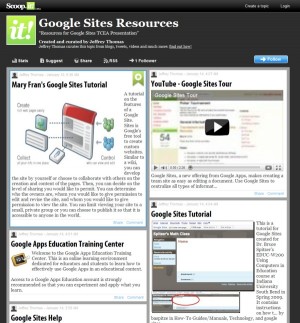"Curation" may be one of the big buzzwords of 2011. As the amount of information accumulates thanks to the Web, it becomes increasingly important that we use tools to help us find information that's relevant and useful.
The role of the curator has always been to help pull together and oversee collections of materials. But just as Web 2.0 has expanded the traditional role of publisher to almost anyone, the role of curator now too is changing. Anyone can "curate" online material, pulling together their own collections.
There are a number of tools that enable this. Social bookmarking may be the most well-known, with services like Delicious and Diigo, for example, enabling people to tag and save interesting blog posts and websites. By following others who use these sites, you can not only handle your own curation efforts, but subscribe to the things that other people have deemed important.
That's another vital part of the act of curation: what other people have deemed important. Curation isn't a matter of algorithms or recommendation engines telling you what you might like to read based on your past viewing or buying habits. Curation involves people -- those who have both the skills and the knowledge to piece together their various collections.
While the Web has perhaps democratized who can be an expert, we do still prefer to turn to those with specific backgrounds and from specific professions, especially when it comes to education.One interesting new curation tool is Scoop.it. With Scoop.it, you can set up particular topics that you're interested in. The service crawls the web, looking for content based on your keywords. It suggests materials to you, which you can choose to "scoop" if you like. You can also mark materials you find on your own (made easy with the use of a "bookmarklet" that lets you tag material as you browse), as well as include suggestions from others. Scoop.it then presents this material in a Flipboard-like interface, a more visual way of presenting the content, perhaps, than just a list of bookmarks and the like.


